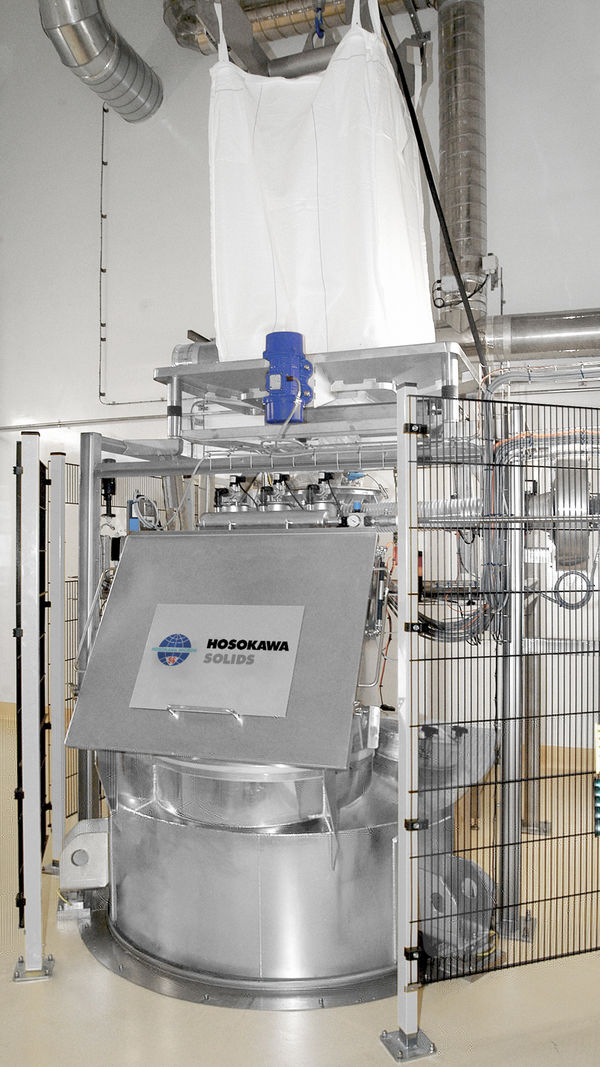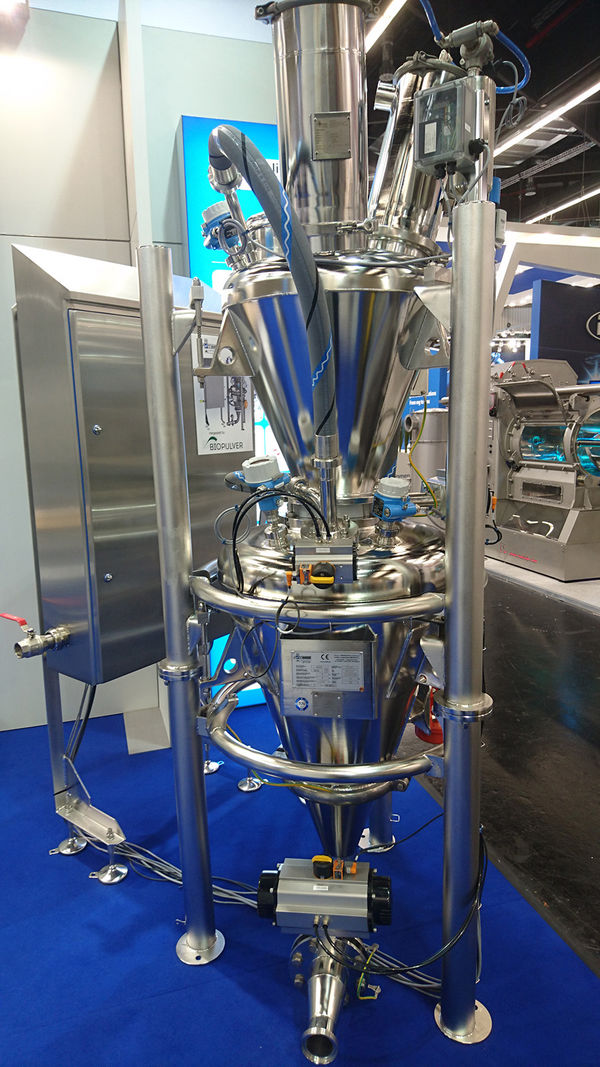Solids Hygienic Design
For dry or wet processesDepending on the area of application, a distinction is made between solids Hygienic Dry Design and solids Hygienic Wet Design. Both share the following aspects in common:
- Dimensioning and design according to relevant standards and guidelines, wall thicknesses and weldings according to strength requirements
- Pressure proof or pressure shock resistant components with the required verifications • Support structures with static calculations to the extent required
- FDA-approved seals
- Internal surface finish according to EN 10088 2B with roughness value Ra ≤ 0.8 µm, metal plates outside starting from 6 mm 1D according to EN 10088 and fine glass bead blasted (satin gloss). Exterior casting glass bead blasted Ra = approx. 6.3 µm, permissible casting defects according to quality class VC2 to DIN EN 1370
- Equipment is delivered hygienically clean and with sealed cavities
The solids Hygienic Dry Design is used for dry processes with dry cleaning. It is designed for food, cosmetic products and pharmaceuticals if a risk analysis according to HACCP has shown that production hygiene is required, that the product is not microbiologically sensitive due to its non-critical aw value and that hygiene level 1 according to EN ISO 14159 is to be applied. In other industries, it is used when there are high requirements for avoiding cross-contamination with easy cleaning. Complies with 2006/42/EC Machinery Directive with Annex 1(2.1). Food processing machinery, EHEDG guidelines and GMP requirements for intended use. For pharmaceutical products, a case-by-case assessment is required.
In addition to the points mentioned above, the solids Hygienic Dry Design features the following characteristics:
- Stainless steel version in a suitable alloy, with the exception of sensors and actuators, or equivalent casting materials. The requirements for corrosion resistance must be met when selecting the suitable alloy
- Easy to dismantle for exclusively dry cleaning • welds in principle according to EN ISO 5817 quality level B as well as continuously free of gaps and pore and internally ground with roughness value Ra ≤ 0.8 µm, pickled and passivated, however, internal pores are not tested, i.e. no X-ray test. Surface pores and undercuts are not permitted. Pipelines: High-quality orbital welds achieve Ra ~ 3 µm with good inerting and are not ground
- Optional electropolishing
- Support constructions made of stainless steel with closed profiles, fine glass bead blasted (satin gloss)
- Support constructions optionally made of carbon steel with a food-grade paint finish
The solids Hygienic Wet Design is used for wet processes and dry processes with wet cleaning. It is designed for food, cosmetic products and pharmaceutical products, if a risk analysis according to HACCP has shown that maximum production hygiene is required and/or the product is microbiologically sensitive and hygiene levels 2 or 3 according to EN ISO 14159 are to be applied. In other industries, it is used when there are high requirements for avoiding cross-contamination with easy cleaning. Complies with 2006/42/EC Machinery Directive with Annex 1(2.1). Food processing machinery, EHEDG guidelines and GMP requirements for intended use and DIN EN 1672-2. For pharmaceutical products, a case-by-case assessment is required.
In addition to the points mentioned above, the solids Hygienic Wet Design features the following characteristics:
- Stainless steel version in a suitable alloy, or equivalent casting materials. The requirements for corrosion resistance must be met when selecting the suitable alloy
- Electropolishing where technically possible and appropriate
- Easy to clean, free of dead spots and gaps, suitable for wet cleaning in an assembled condition (CIP) with subsequent inspection and re-cleaning, if necessary
- Welds in principle according to EN ISO 5817 quality level B as well as continuously free of gaps and pores, internally ground with roughness value Ra ≤ 0.8 µm, externally Ra ≤ 3 µm, however, internal pores are not tested, i.e. no X-ray test. Surface pores and undercuts are not permitted. Pipelines: High-quality orbital welds achieve Ra ~ 3 µm with good inerting and are not ground
- Support constructions made of stainless steel with open profiles, closed profiles only if statically necessary, fine glass bead blasted (satin gloss)

